

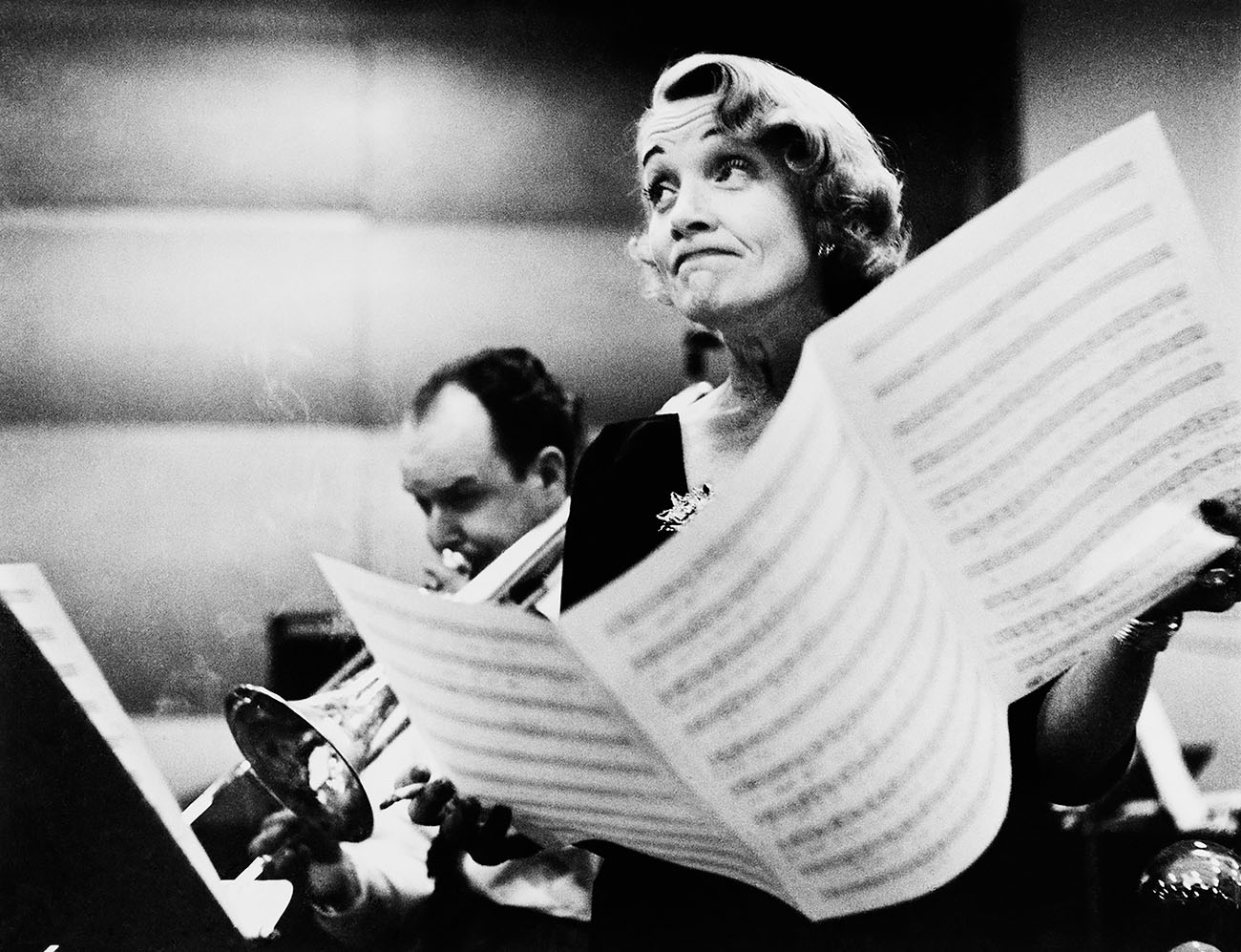
Unretouched Women: Marlene Dietrich at the recording studios of Columbia Records. New York City, USA. 1952. © Eve Arnold / Magnum Photos
"The traditional Hollywood still was to try to flatter and titillate as much as possible, so that in lighting you would light as if you were lighting up a cigarette pack. You would light for the eyes and the legs and the breasts. And so each little bit became something special. You never got a sense of the person. It was just that commodity that was being sold.
In the early 50s I was just beginning as a photographer and I got a crack at trying to get away from that traditional look. I got a call from Marlene Dietrich asking me to come to Columbia Records where she was recording all those songs that she made famous during the Second World War. I walked in and the studio was very stark. It was like a big barn. There was no lighting. She was sitting on a stool singing away. And I just wanted the reality of that situation. I didn't want to flatter her."
- Eve Arnold, Omnibus: Eve Arnold. BBC TV documentary, 1977
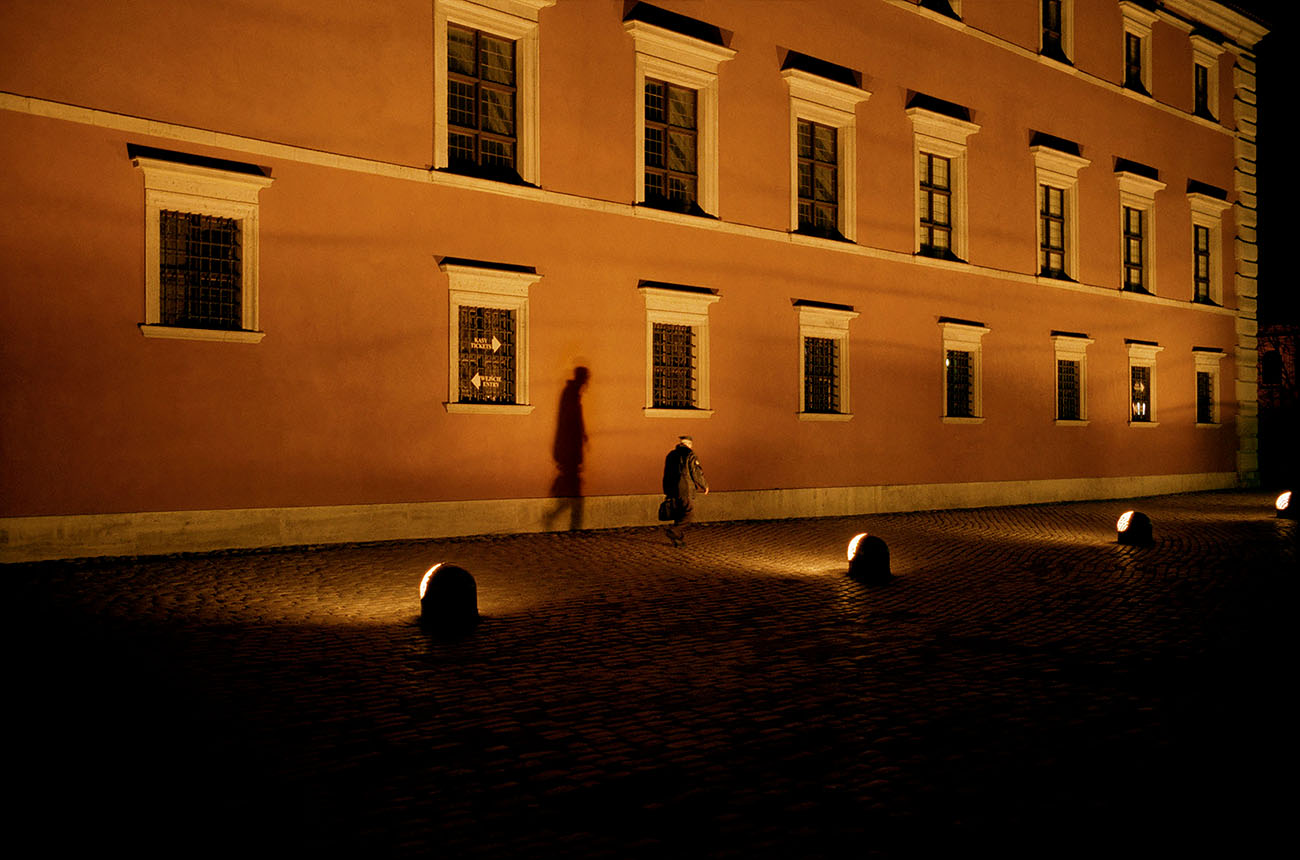
Once Upon a Night. Royal Castle, Warsaw, Poland. 2005. © Patrick Zachmann / Magnum Photos
"I've always been drawn to night-time atmospheres. Like many other photographers, I guess, I like the world of Brassai and Weegee. In the past I've photographed, in black and white, many parts of the underworld at night. Today, it is with colour that I explore it, staying awake throughout the night, even though I am not a sleepwalker, insomniac or even really a nocturnal person. Simply put, I like photographing nocturnal atmospheres and lighting. I just love the artificial colours, a light upon a face, or even the shadow projected upon a wall that then becomes a screen.
My images move away from reportage and become impressionist. Ugly and grey during the day, a city becomes attractive at night, or sometimes frightening. The lights change, hot or cold, colliding prettily into a mix of colour temperatures. They make faces smooth, mix up ages, blur signs of belonging and allow silhouettes lit by a street lamp or a car headlight to be discovered. Scrutinising the city in obscurity and solitude, the photographer hesitates between entering into this nocturnal universe or staying outside it. My photographs are the story of this double attraction."
- Patrick Zachmann
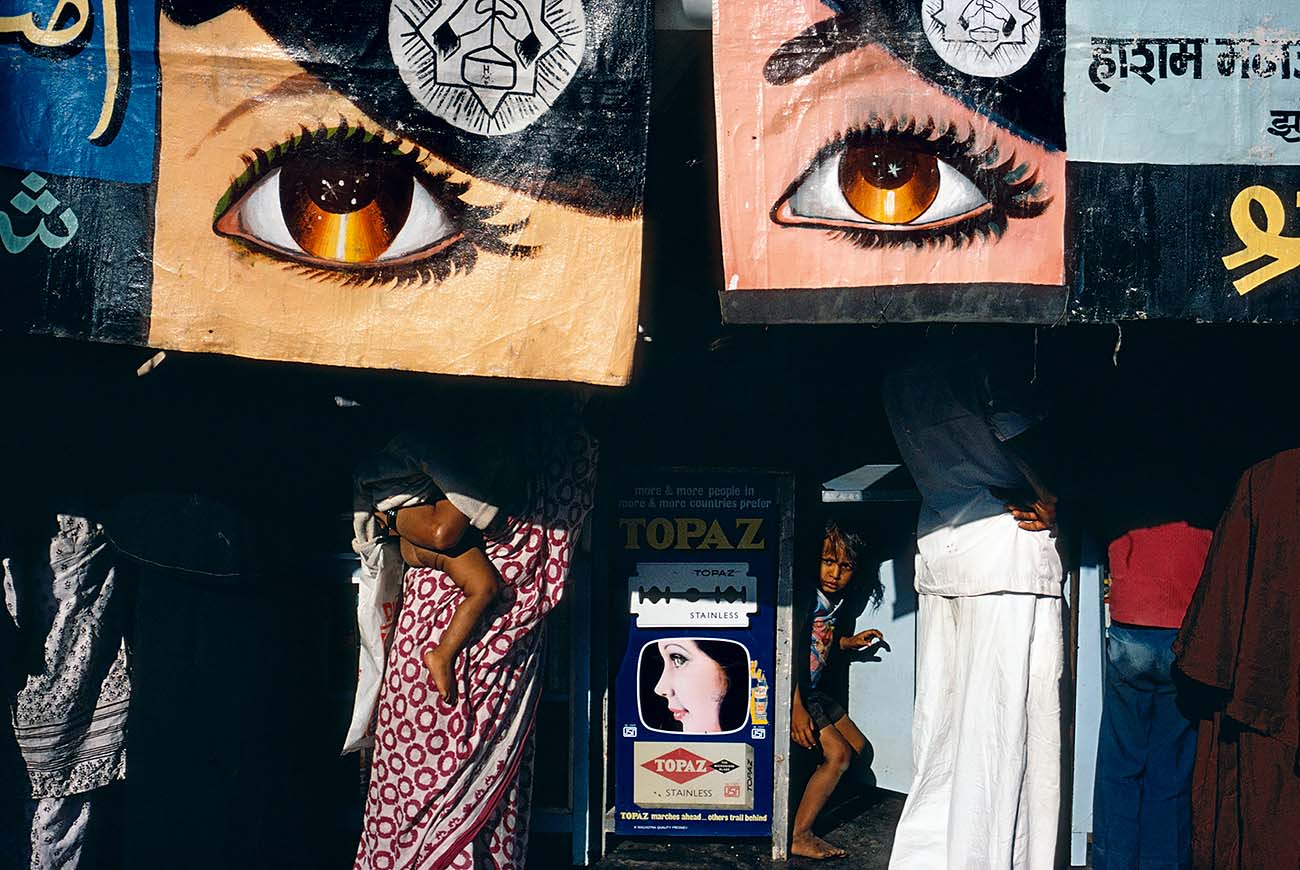
From the book, The Suffering of Light. Bombay, India, 1981. © Alex Webb / Magnum Photos
"As a young photographer, I worked solely in black and white. In the 1970s, I traveled to Haiti and along the U.S.-Mexico Border: experiences that changed me not only as a photographer, but as a human being. Ultimately, the searing light, the intense color, and the vibrant street life of these places - so different from the gray-brown reticence of my New England background - inspired me to start working in color. Guided by my newfound obsession with this medium, I traveled to India in 1981. Overwhelmed by the hot light, the vivid hues, and the chaotic streets of Bombay, I wandered incessantly, trying to make visual sense of this complicated and often confounding culture. Walking one morning, I glimpsed a pair of enormous eyes across the street. As I raised the camera to my eye, a child emerged from the shadows. I clicked the shutter." - Alex Webb
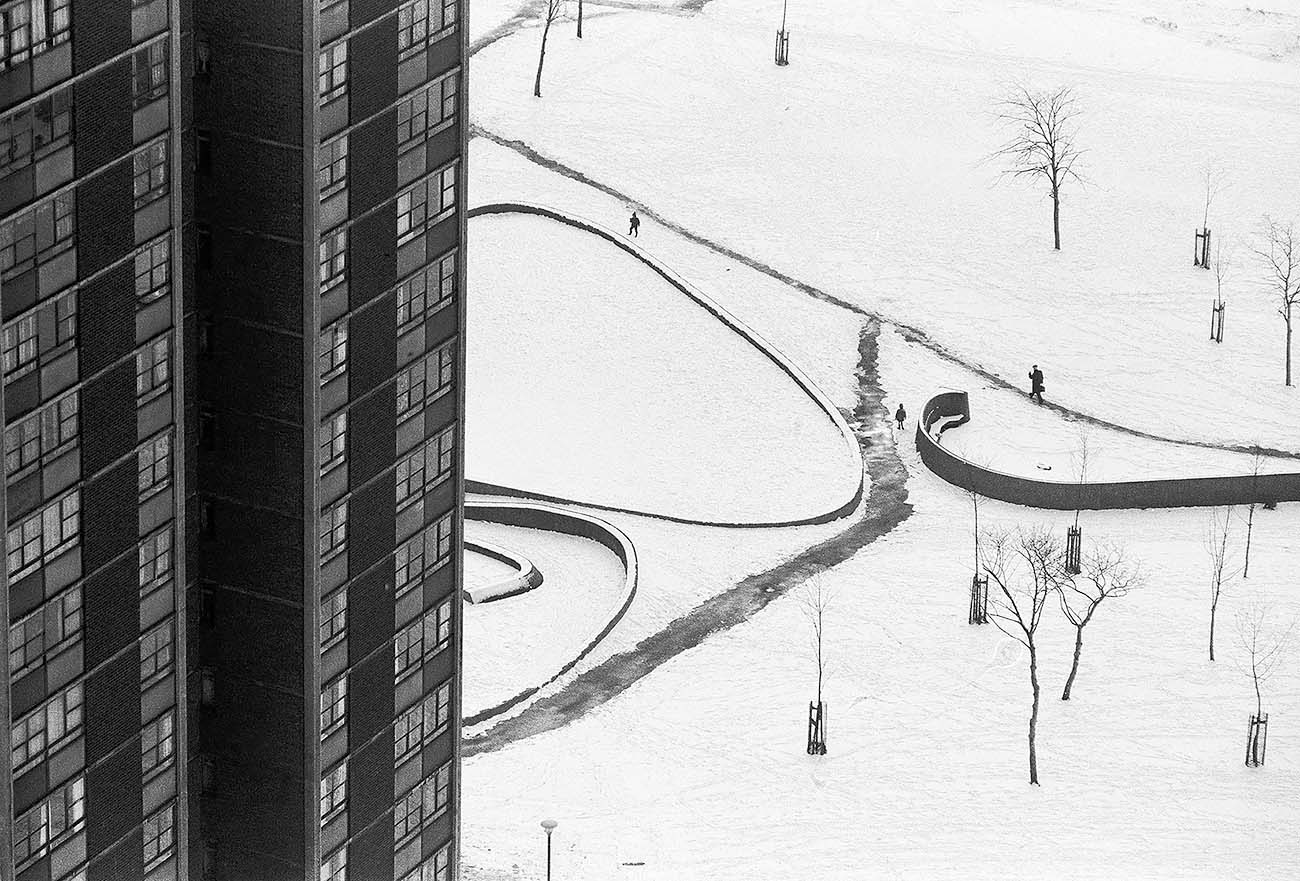
Tower blocks in West End. Newcastle-upon-Tyne, England. 1969. © Chris Steele-Perkins / Magnum Photos
"This landscape is important to me as it was taken while I was a student in Newcastle studying psychology and wondering if I could make it as a freelance photographer. I understood I needed to find my own 'voice' to be the kind of photographer I wanted to become, and one way to learn was from copying the work of those photographers I admired. In this photo I think there are traces of André Kertész, Cartier-Bresson, Paul Strand and René Burri. The question now was, 'Was there room for my own voice to be found too?' With this photo I took the first steps towards answering, 'Yes'."
- Chris Steele-Perkins
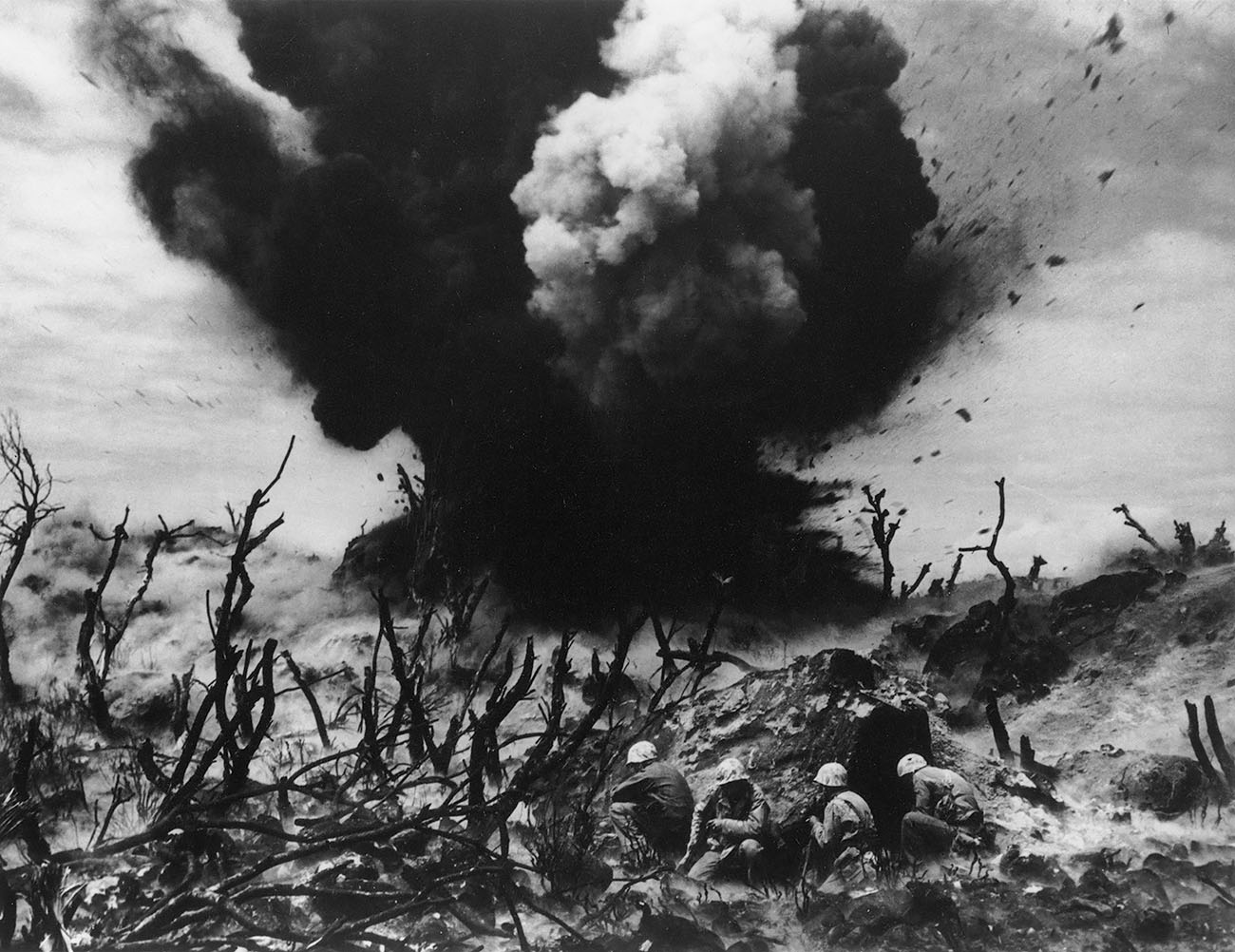
'Sticks and Stones, Bits of Human Bones'. U.S. Marine Demolition Team, Battle of Iwo Jima, Japan. 1945. © 2022 The Heirs of W. Eugene Smith / Magnum Photos
"W. Eugene Smith first became famous for his gripping photographs of World War II, notably covering the Pacific invasion from 1942-45, including Iwo Jima, Okinawa, and Saipan. Embedded with Marines on Iwo Jima, Smith captured this stunning image, which appeared on the covers of both LIFE magazine on April 9, 1945, and the definitive Smith biography Shadow & Substance by Jim Hughes.
According to the LIFE caption in Smith's photo essay about the capture of Iwo Jima, this shot displays Marines blowing up a cave connected to the blockhouse that served as Japanese headquarters on Hill 382, known as 'Meat Grinder'. The photo's title came from Smith's own handwritten caption. Preparing to send his Iwo Jima photos to LIFE, Smith described this image: 'A striking picture which is about the best I have made since the year's beginning, which still leaves me cold and unsatisfied and yet I do like it for what it is worth.'
Barely one month later, on May 22, 1945, Smith himself received life-threatening injuries while hit with mortar fire on Okinawa. He recuperated in New York State for a year before taking his famous photograph 'The Walk to Paradise Garden', depicting his two children walking into the woods. Smith viewed that image as an antidote to the brutalities of war he had witnessed first-hand. Sadly, the precedent of war is still carrying the day nearly 80 years later.."
- Kevin Eugene Smith, Estate of W. Eugene Smith
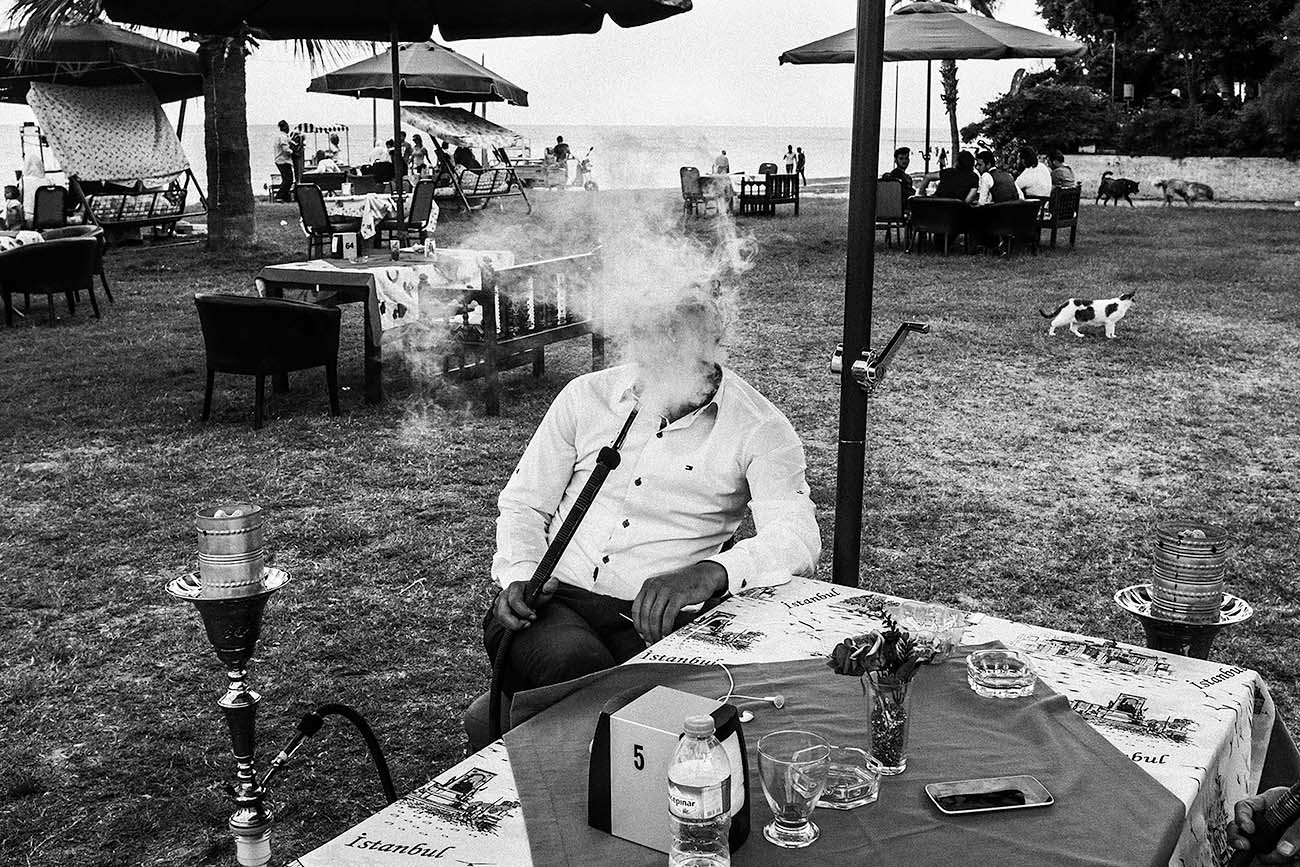
Mersin, Turkey. 2016. © Emin Özmen / Magnum Photos
"I am often told that I look like I am ‘elsewhere'. It's true, I get lost in my own memories, I travel in the mists of my mind. This photograph resonates with me because it shows how I feel in those moments when my head is clouded." - Emin Özmen
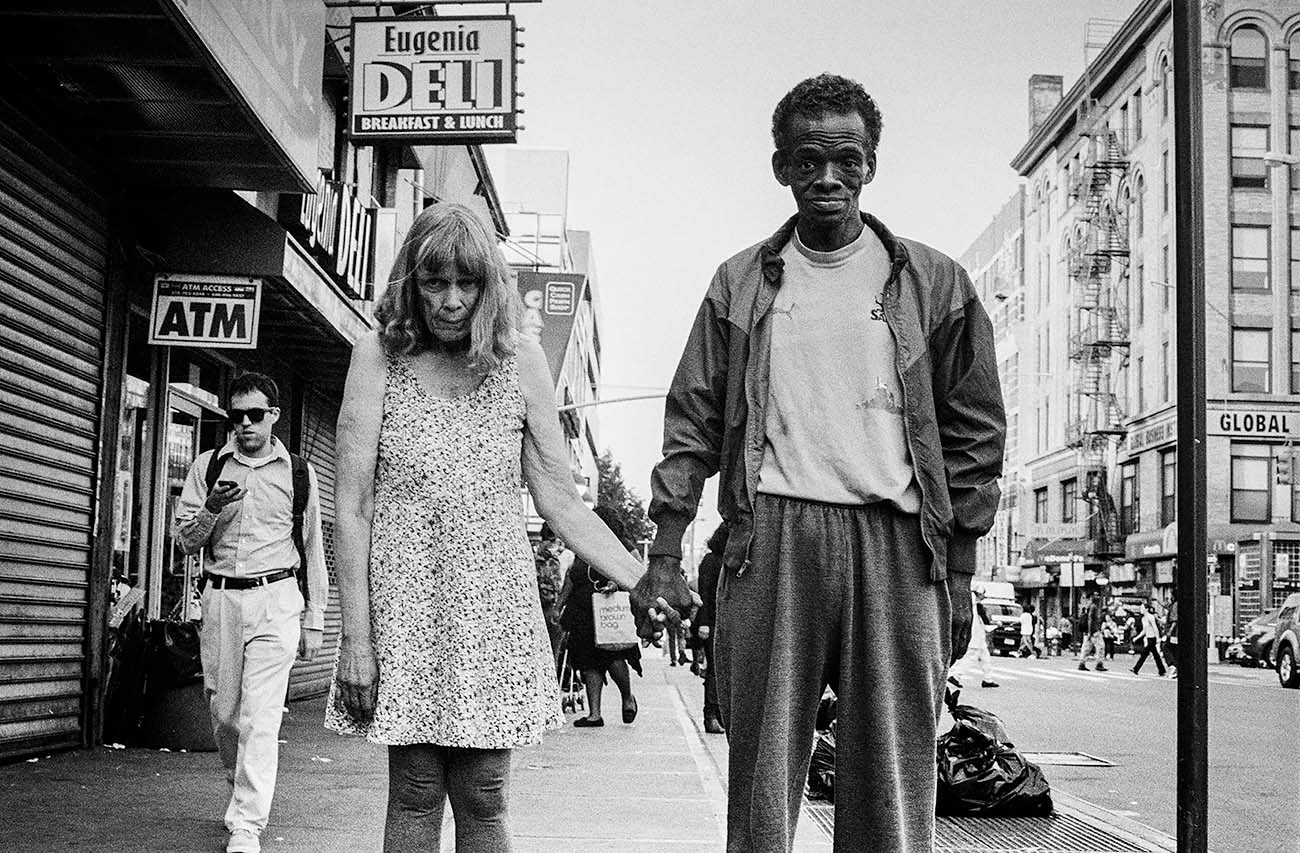
From the 125th & Lexington series. Harlem, New York City, USA. 2012. © Khalik Allah / Magnum Photos
"This image represents my beginnings on 125th Street and Lexington Avenue in Harlem, New York. I was beginning to find my voice as a photographer and at that point I was shooting black and white film. I stopped this couple. I could tell that they had experienced a lot together and I could infer that they had become comforters to each other. To me this image represents perseverance, endurance and love."
- Khalik Allah
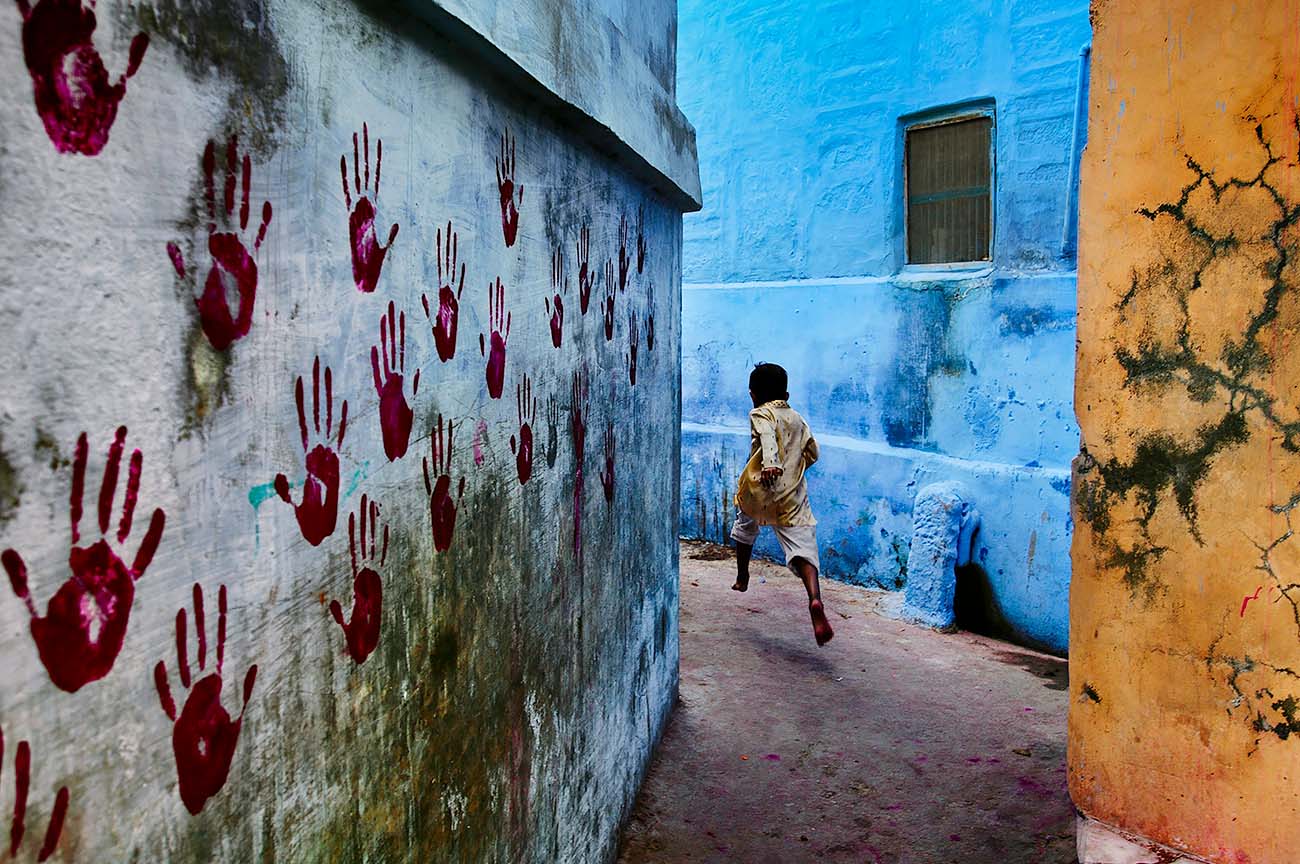
Jodhpur, Rajasthan, India. 2007.. © Steve McCurry / Magnum Photos
"At the foot of the vast Mehrangarh Fort, in Jodhpur, India, one can find a quarter of the old city painted in this shade of blue. I photographed this young boy dashing through the narrow alleyways with handprints on the walls. Handprints are an ancient form of folk art, which I have found and photographed in many places around the world."
- Steve McCurry
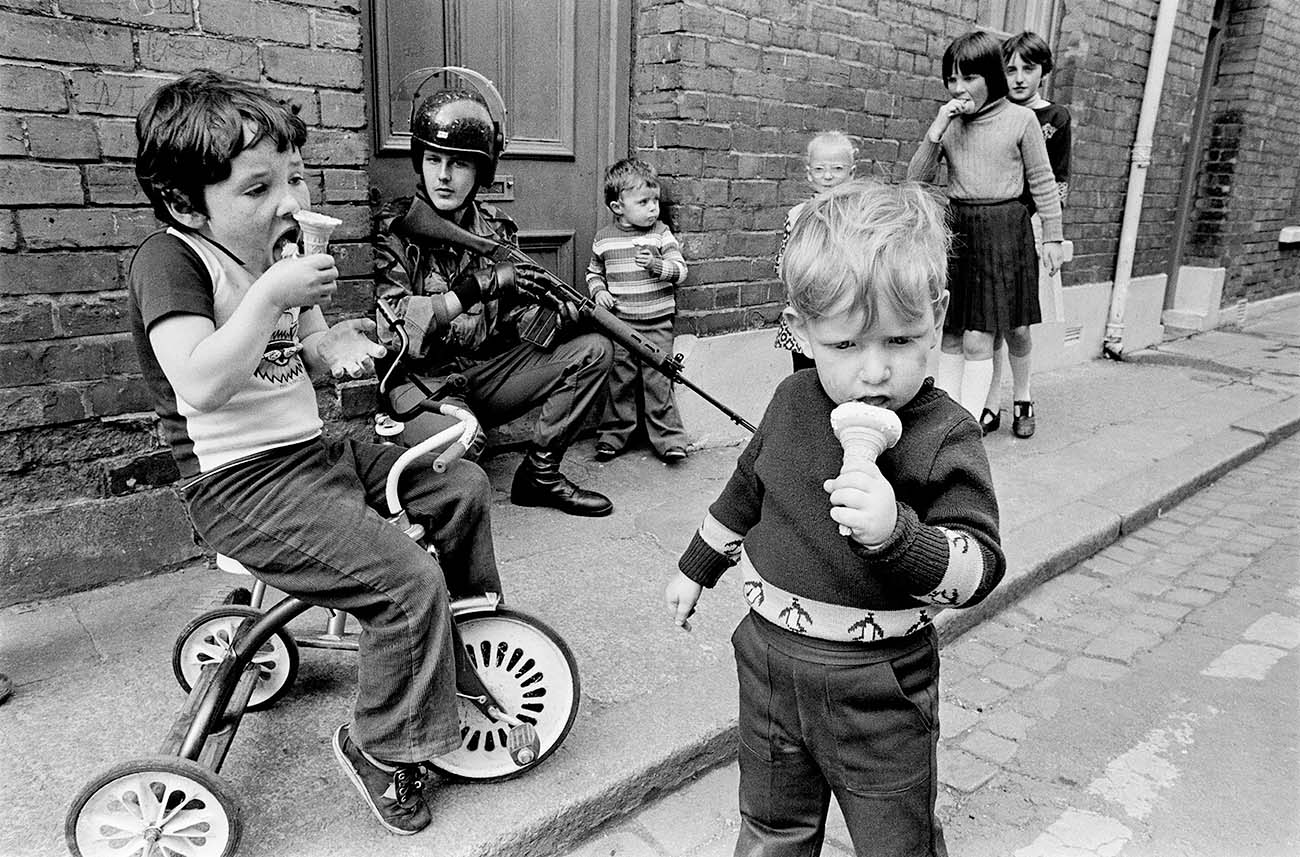
New York City, USA. 1979. © Peter Marlow / Magnum Photos
Ten years after the arrival of British troops in the province, the barricades are once more dividing Catholics and Protestants in areas of Belfast and Londonderry/Derry. Northern Ireland. 1979.
This image captures the reality of the constant grinding presence of conflict in the daily lives of that time. The casualness of the interaction between the children and soldier appears simple but tells a deep and complex story.
- Peter Marlow Foundation
All income the Estate receives from this sale will be donated to the Peter Marlow Foundation, contributing towards our charitable mission, supporting photographic education among diverse groups of young people.
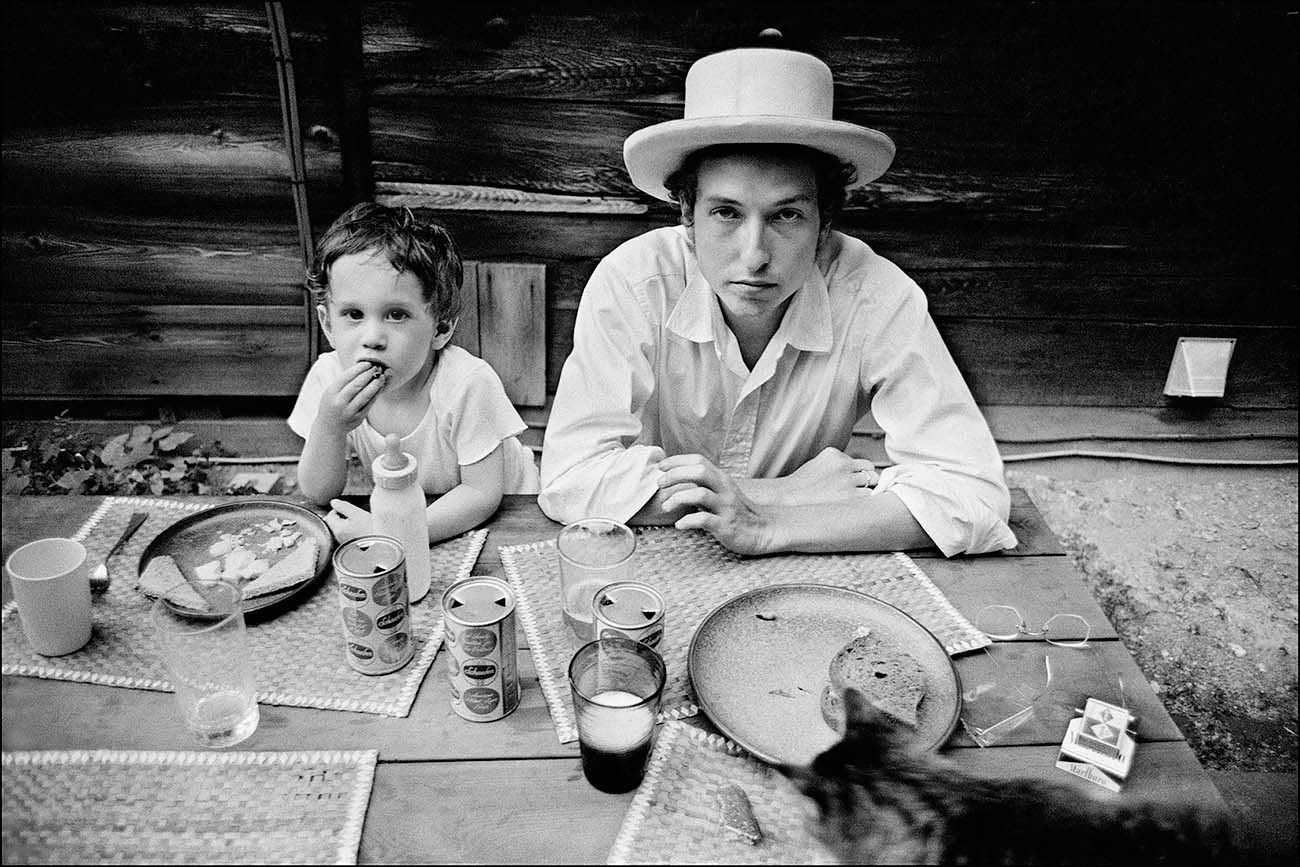
Bob Dylan with son Jesse Dylan outside his Byrdcliffe home. Woodstock, New York, USA. 1968. © Elliott Landy / Magnum Photos
"In early summer '68, I was asked to come to take photos of Bob at his home in Woodstock, for the cover of the Saturday Evening Post. Although he was comfortable with me, he seemed nervous in front of the camera and his uneasiness made it difficult for me. I was never the kind of photographer to talk people into feeling good: I let them be the way they were, and I photographed. Usually it worked out because I flowed with whatever mood they were in, without resistance, until things lightened up.
His young son Jesse was around while we were taking pictures, and at one point, his toy truck got seriously stuck in a doorway. I began to go over to help him but Bob just encouraged him, 'C'mon, Jesse, you can do it, just keep trying.' And Jesse, with a big smile of satisfaction, did it. I was very impressed by how Bob instinctually taught him self-reliance. Afterwards, we had a modest lunch outside his house.
Bob was a very special person. He intuitively understood what was going on in a situation. There was a feeling you got when you were with him that was exciting. I believe it was the flow of creative energy surrounding him that sort of spilled over onto you.!"
- Eliott Landy
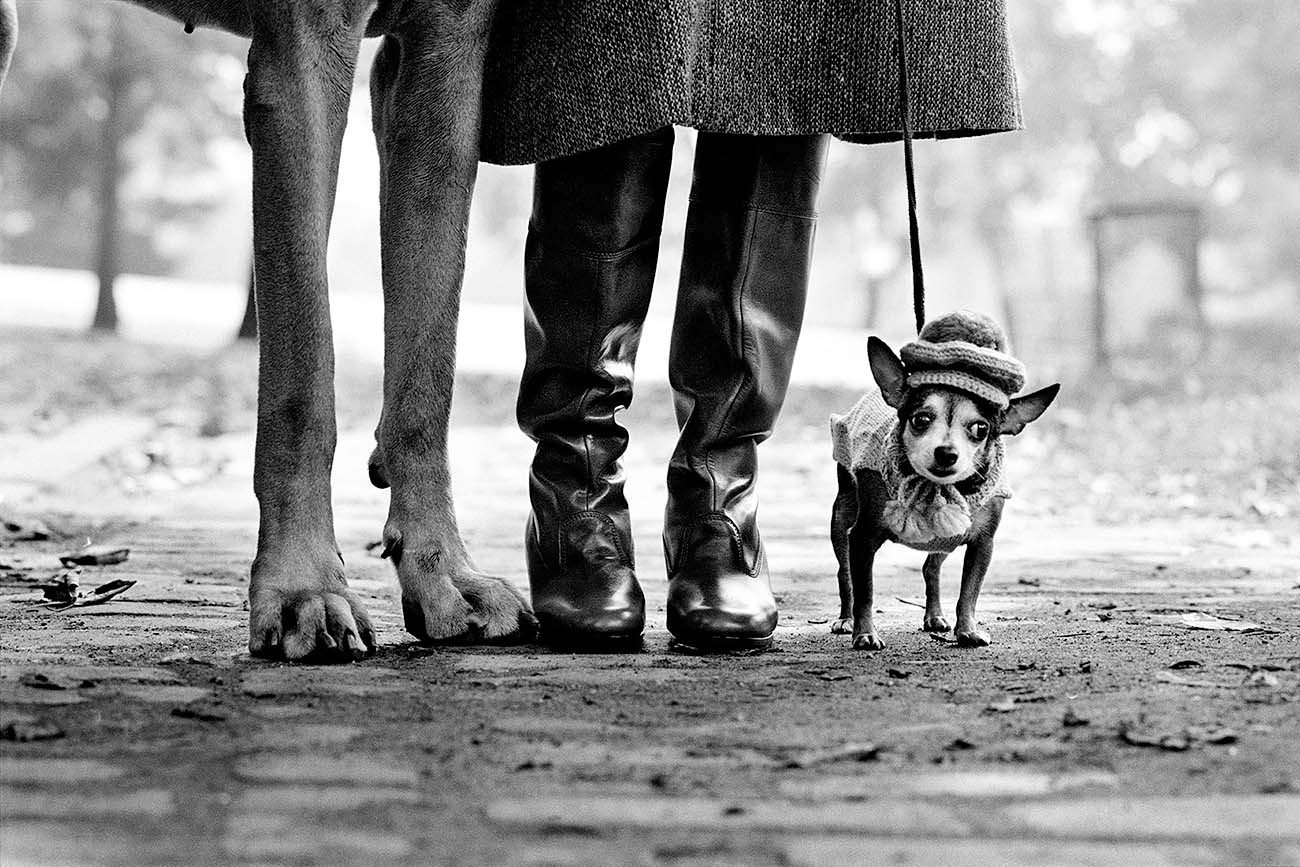
New York, New York, USA. 1974. © Eliott Erwitt / Magnum Photos
"The dogs are both an excuse and reason for taking these pictures. They give me an excuse because they make good subjects. I like them, people want to see them, I can't resist!"
- Eliott Erwitt
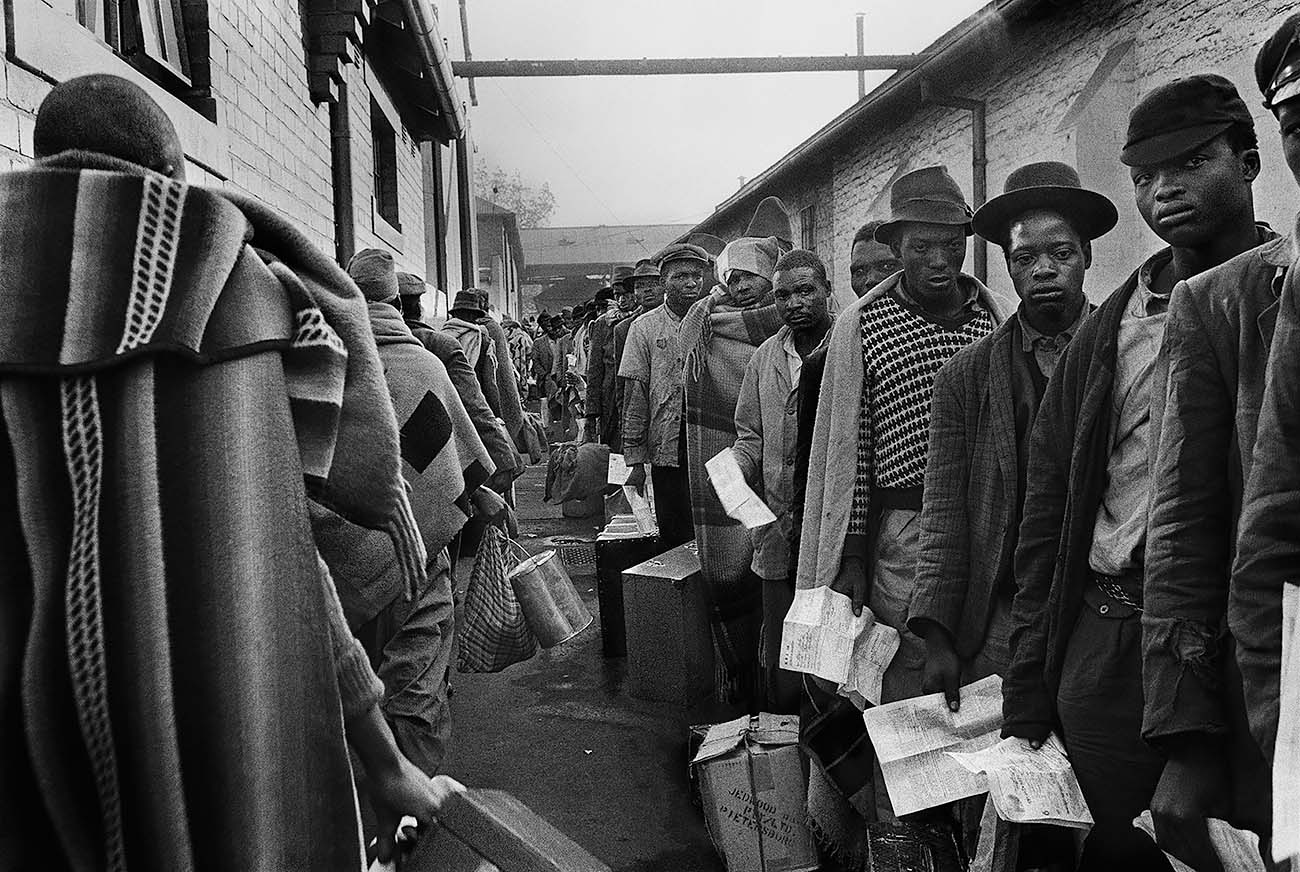
Contract-expired miners are on the right, carrying their discharge papers and wearing 'European' clothes while new recruits, many in tribal blankets, are on the left. South Africa. 1966. © Ernest Cole / Magnum Photos
"Apartheid was often misleadingly described as ‘separate development’. Lived apartheid was rarely as dystopian as it first appeared nor as benevolent as a racist ideologue might imagine. The devil was in the detail and the detail was the clunky kragdadigheid (brute force) of Afrikaner bureaucracy."
- Ernest Cole
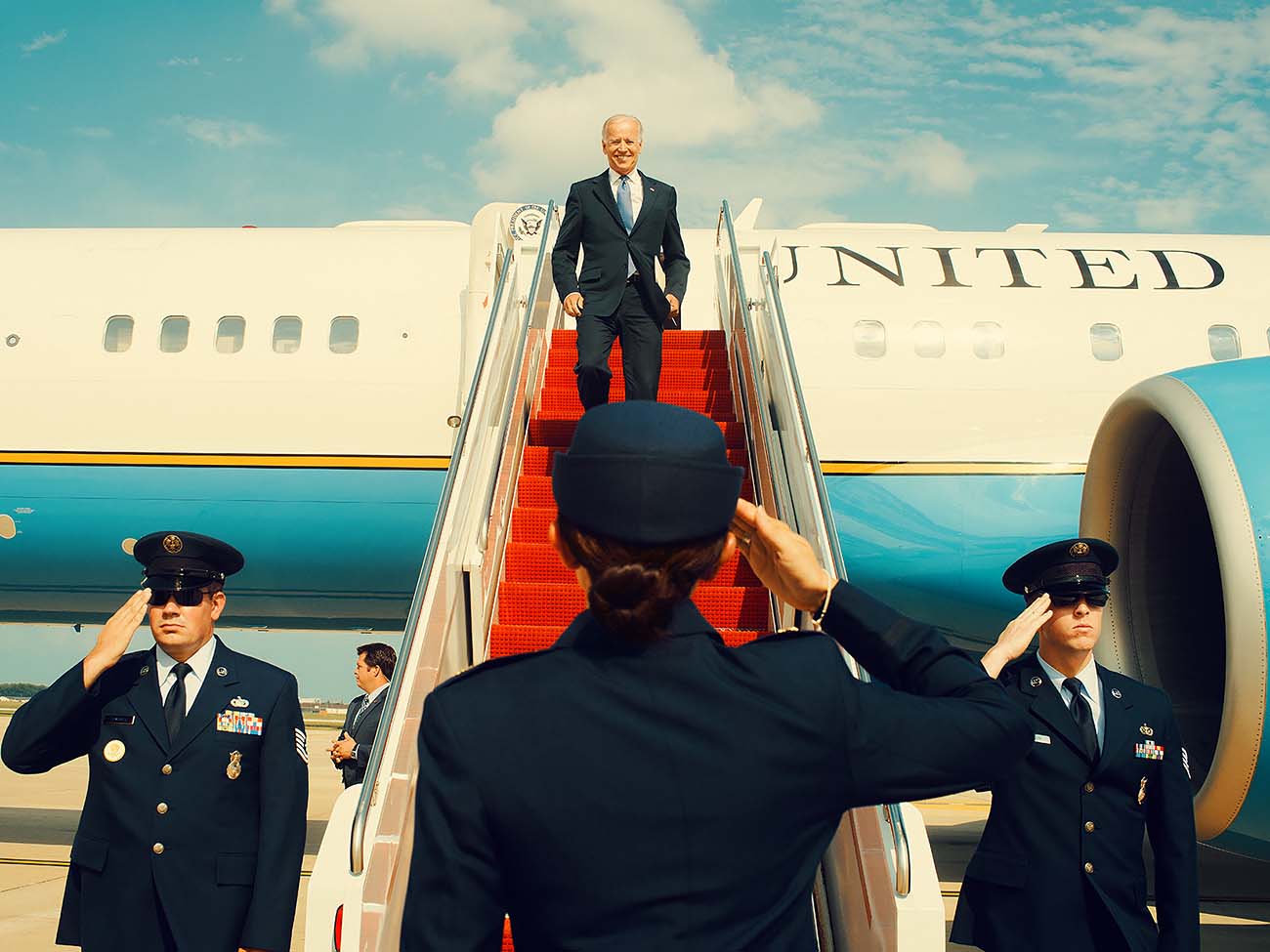
Vice President Joe Biden descends Air Force 2 at Andrews Air Force Base. Maryland, USA. 2012.© Christopher Anderson / Magnum Photos
"In 2012, I spent a few days with then Vice President Joe Biden on Air Force 2 as he made several campaign stops around the USA to help re-elect Barack Obama to the presidency. We had dinner at a spaghetti restaurant and got ice cream one evening at Dairy Queen. I made this photograph at the end of our trip as we returned to Andrews Air Force Base. It looked very presidential in the moment - like something out of time. It didn’t occur to me that it would precede the moment he became the actual president of the US."
- Christopher Anderson
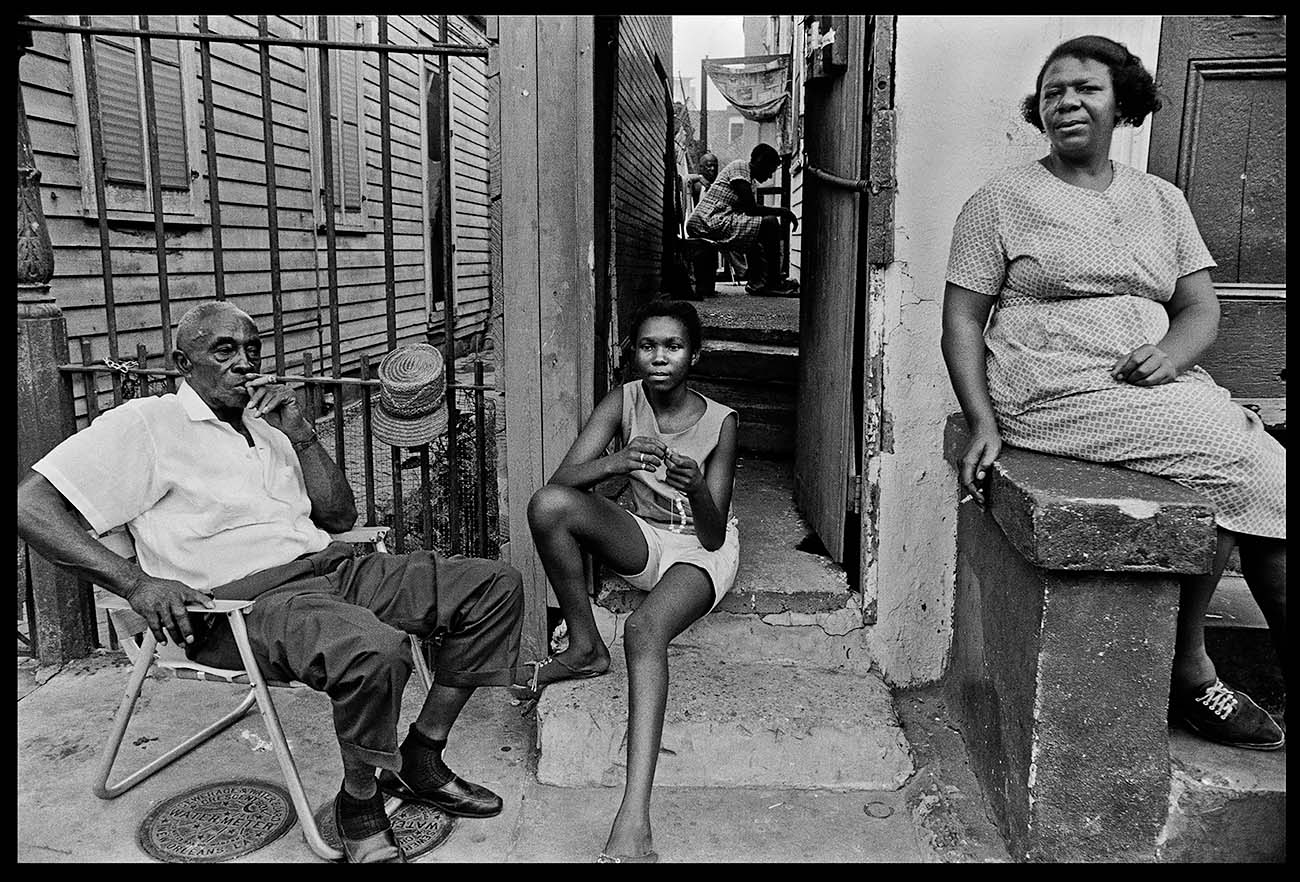
New Orleans, Louisiana, USA. 1968 © Abbas / Magnum Photos
"It was in New Orleans that I produced my first photographic essay, a portrait of the city. I did not know it at the time, but the importance I attach to the sequencing of my work started there and then. When I discovered this street shot of the African American family on the porch of their house on my contact sheets, I instinctively knew that I had become a real photographer. My future aesthetic, 'the suspended moment', was already present, even though I would only fully formulate it some years later. But it was only in 1998 when Magnum published and exhibited this photo in the collective book 1968: Magnum throughout the world that I realized that, thirty years earlier, I was the same photographer that I am today. The only difference is that today I would probably use a 35mm lens instead of the 28mm lens to avoid the slight distortion at the edges. But I would certainly take the same picture."
- Abbas, from the photographer's notes
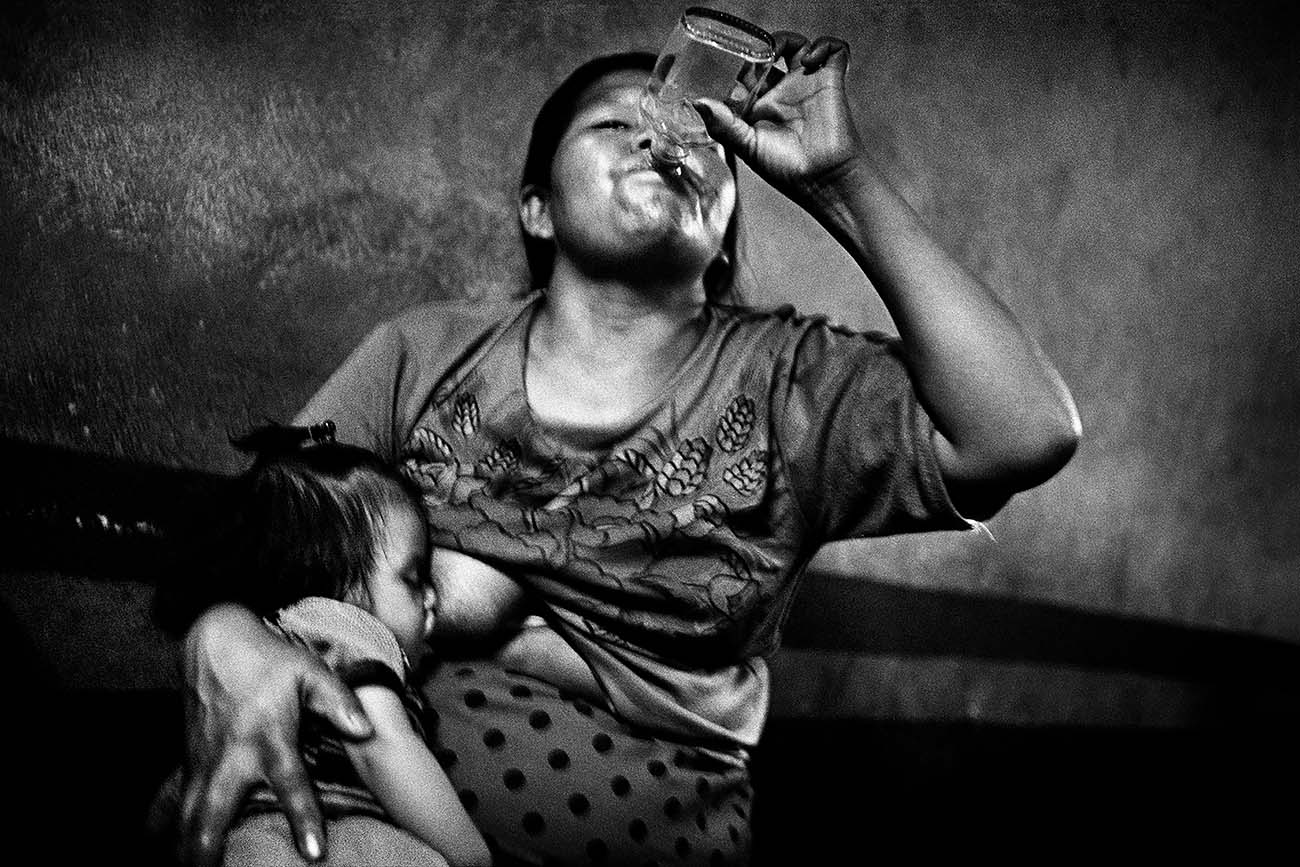
Mala Noche. Puerto San José del Pacifico, Guatemala. 1993. © Antoine d'Agata / Magnum Photos
"This portrait is among the most significant of the images from Mala Noche, my first documentary work. I was never able to give these women as much as they gave me. I had to pay the price, I had to prove I was not just there to take and to receive, but in the end I didn't give as much as they gave me. I chose to live this life, they didn't. They never had a chance to choose another path."
- Antoine d'Agata
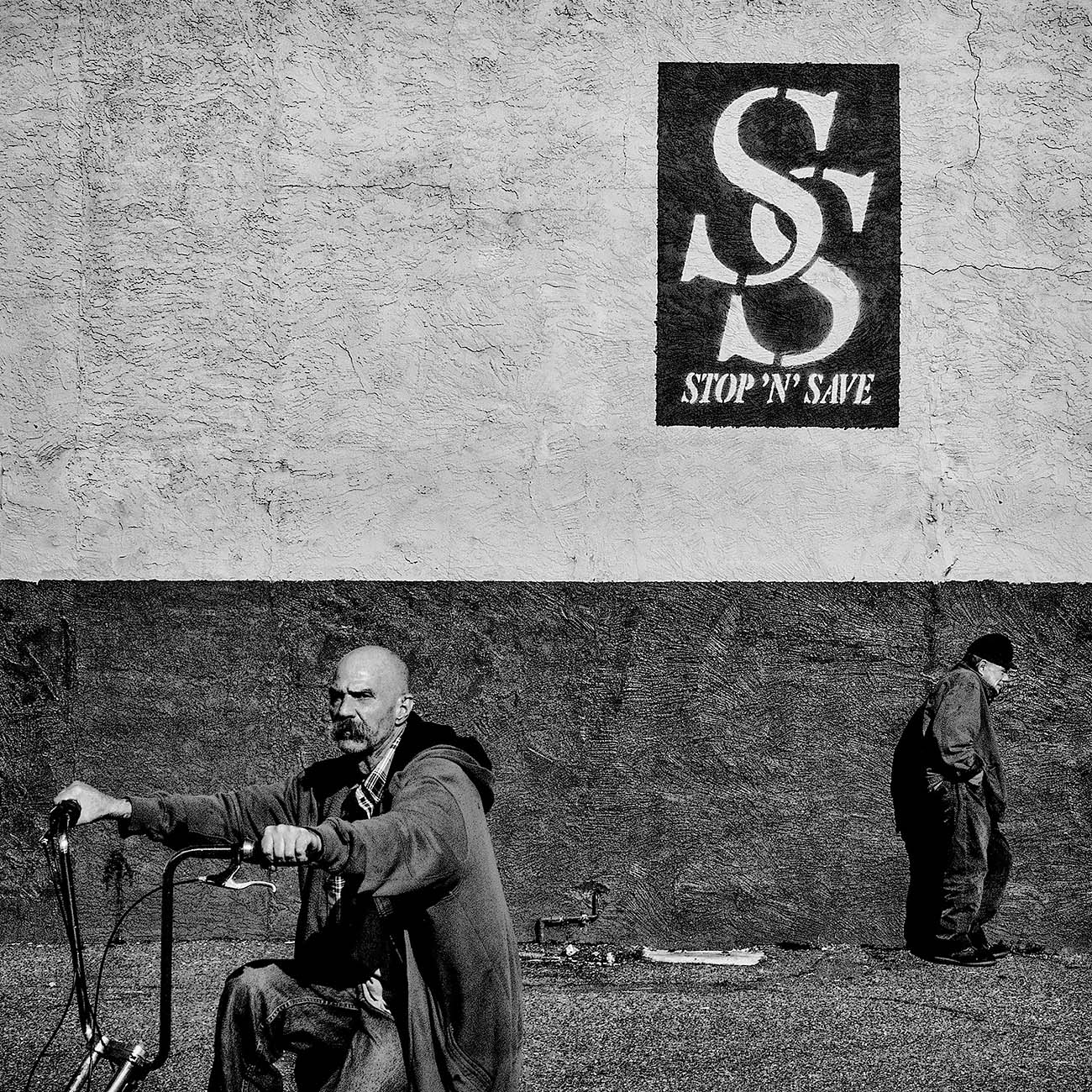
Modesto, California, USA. 2014. © Matt Black / Magnum Photos
"I was to spend six years and thousands of miles looking to see how many other places there were in America like my home region, the Central Valley in California. The precedents were in my own place: too many people living in poverty, and not enough recognition that this was happening here and everywhere across the country. This image helped set the stage for a long journey, looking for those connections."
- Matt Black